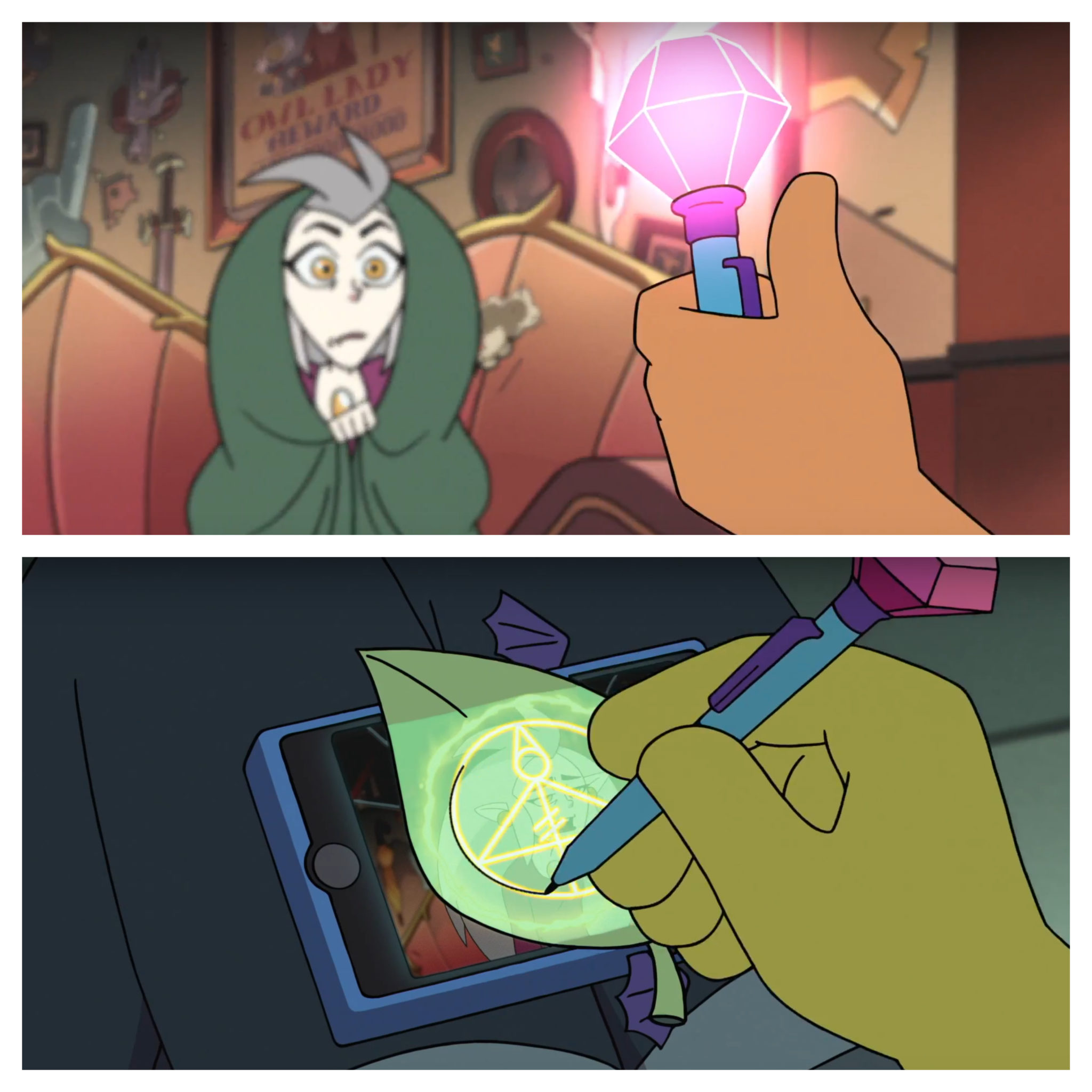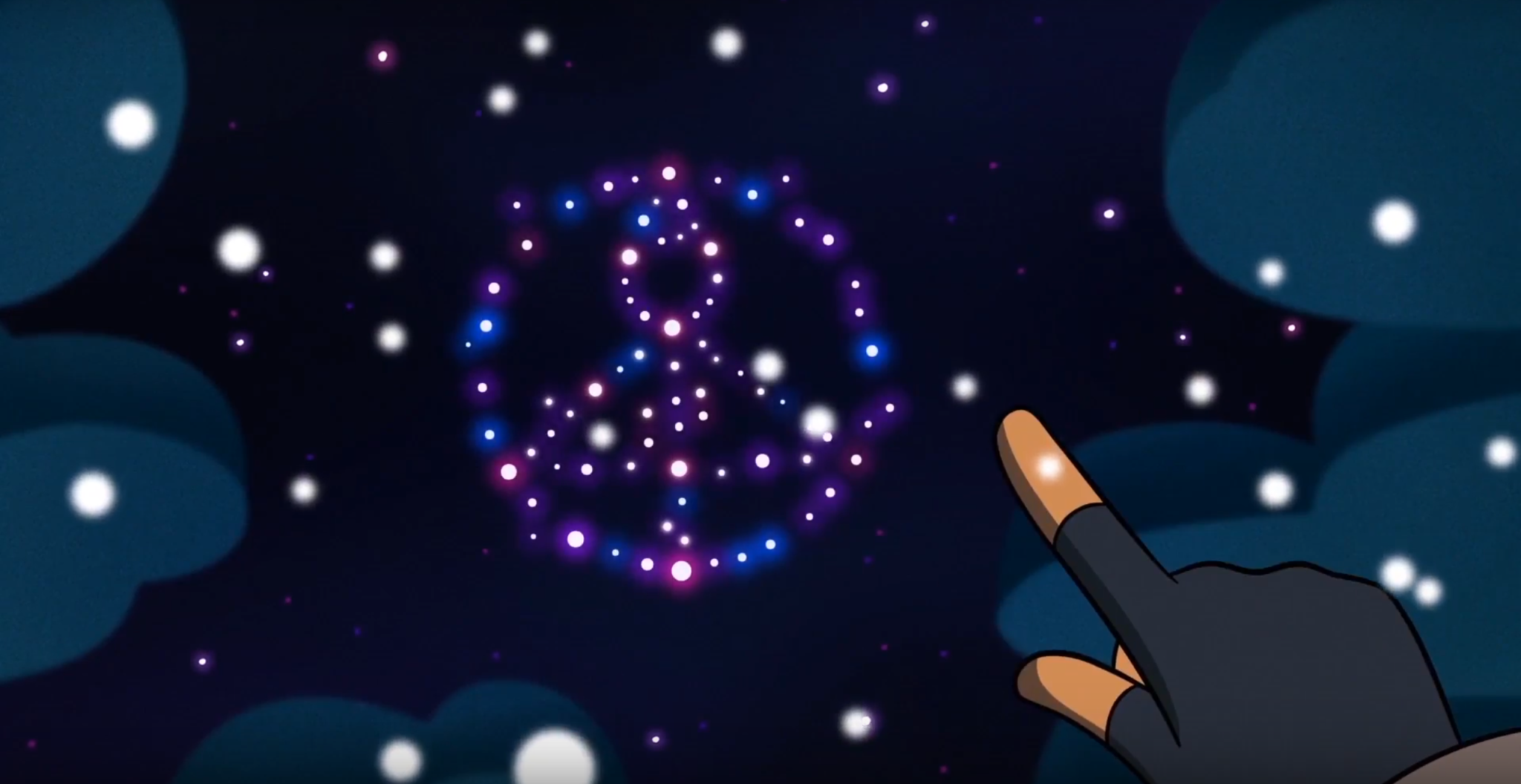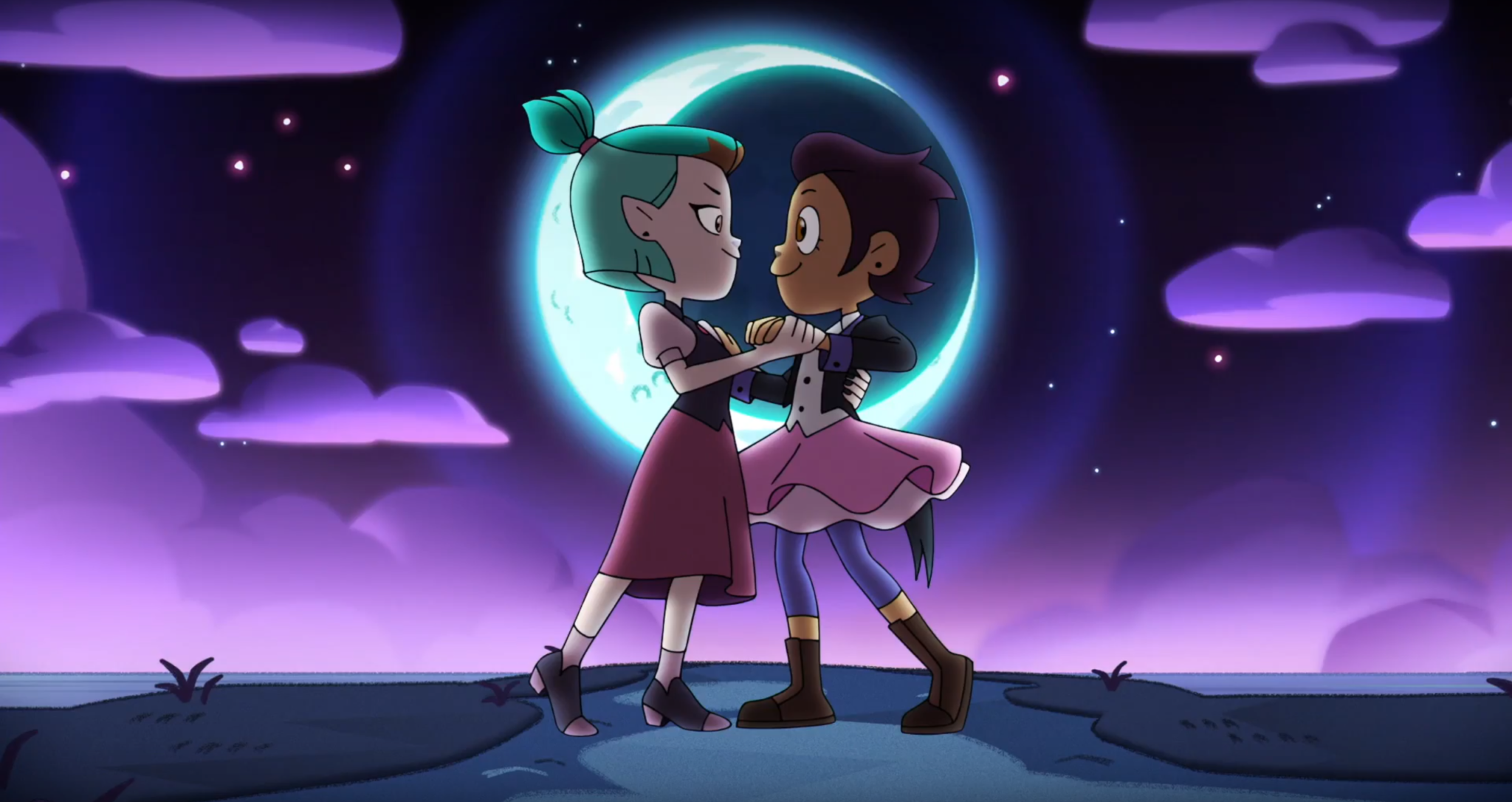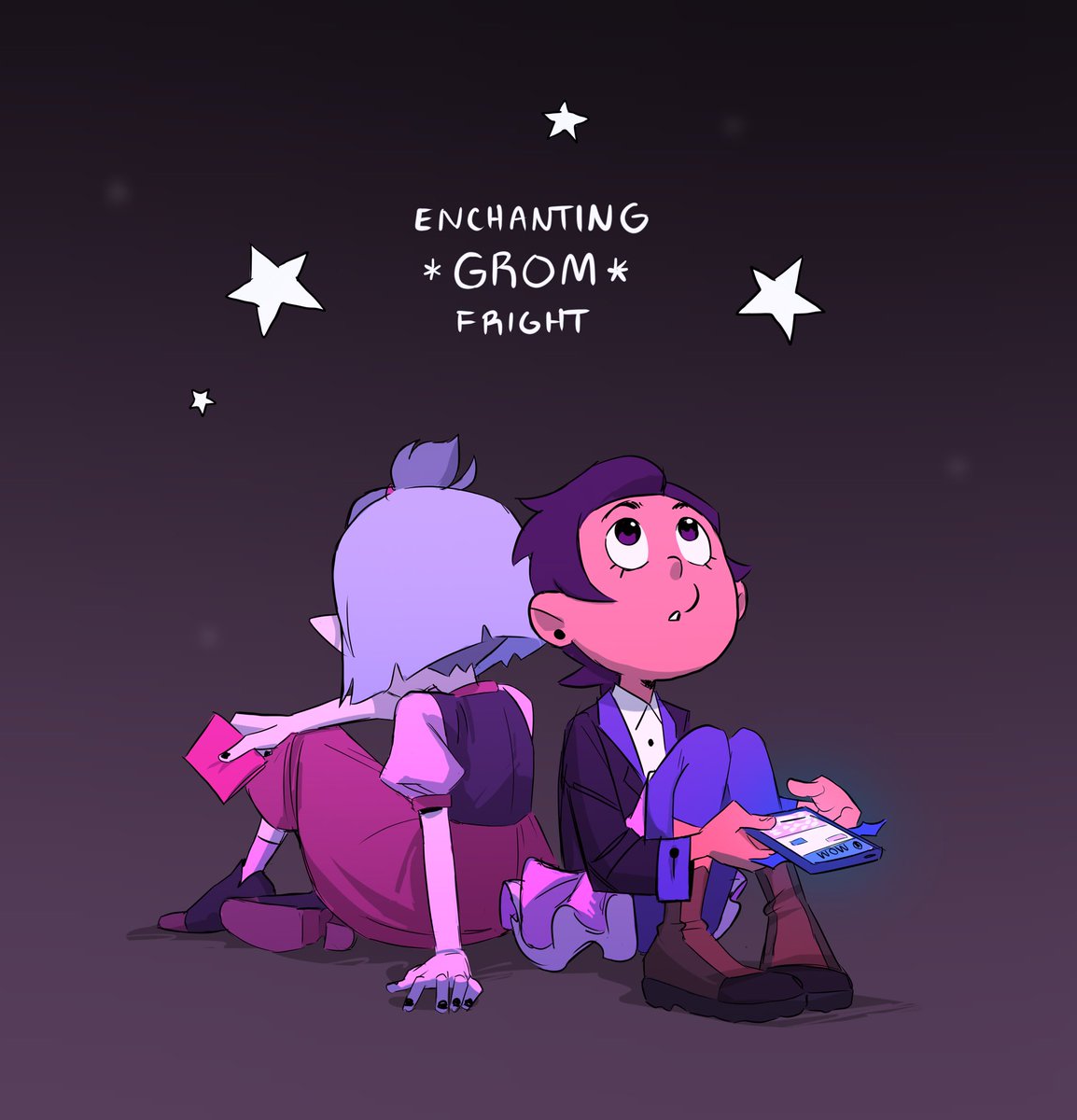Spoiler Warning for The Owl House
Introduction:
In honor of Celebrate Bisexuality Day, I wanted to discuss a new TV show that makes me proud and inspires me to celebrate myself. That is Dana Terrace’s new comedy-horror cartoon, The Owl House.
The show follows Luz Noceda, a fourteen-year-old, Dominican-American girl, as she trains to become a witch. Her story starts when she stumbles through a portal into a demonic realm, the Boiling Isles. Soon enough she convinces an older witch named Eda the Owl Lady to mentor her. The series has themes related to found family, education, and individuality. And The Owl House, within its first season, has already broke ground for queer representation as it introduced Disney’s first televised bisexual lead character.
Dana Terrace is an out bisexual woman, which lent credence to the queer coding that fans picked up throughout the season. This coding took prevalence when considering Luz’s budding friendship with Amity, another queer-coded female character and potential love interest. Fans dubbed the pairing ‘Lumity’ and watched as Terrace and her team brought the girls together for a romantic prom dance. Though Luz has never used the label to describe herself, Terrace clarified the character’s sexuality in a Reddit AMA. Amity, on the other hand, is conceptualized as a lesbian. Terrace also explained that the show will further develop Lumity in season two. But my interest in Luz’s bisexuality goes beyond her romantic history.
Luz stares in awe at the bare chest of a brooding male warrior and uses she/her pronouns when gushing about her love for education. She blushes separate times when complimented by Amity’s brother and sister. Behaviorally, she’s bisexual, without having to even be in a relationship. Likewise, Terrace and her team reinforce Luz’s sexuality through a recurring color palette based on the bisexual flag, and two examples take place outside a romantic context. Because this imagery occurs in a variety of situations, it indicates that the bi pride colors represent Luz’s relationship with magic, and thus her relationship with herself.

A Colorful Context:
Before I dive into the show, I would like to lay out the context of bisexual symbolism. Bi pride colors date back to the mid-80s and the bi-angles that Liz Nania designed as part of the bi-feminist movement. More than ten years later Michael Page, designer of the bi flag and co-creator of Celebrate Bisexuality Day, unveiled his tri-colored flag. He drew on Nania’s color choice and meaning supposedly, though selected the exact color combinations himself:
“[T]his is magenta – PMS 226 (pink), lavender – PMS 258 (purple) and royal – PMS 286 (blue). I decided to make the top of the flag pink and would give it 40% of the vertical dimension. Purple, which is the resultant color when you overlap pink and blue, would be the middle stripe and would be 20% of the dimension. The lower 40% would be blue. […] The pink color represents same sex attraction (gay and lesbian), the blue represents attraction to the opposite sex (straight) and the resultant overlap color purple represents sexual attraction to both (bi).”
The bi flag dates back to December 1998 and quickly went viral thanks to the Internet and Page’s social site, BiCafé. His living legacy manifests in bi lighting and color palettes, and the concept is quickly developing into its own cultural phenomenon.
Bisexual lighting — particularly the pinks and blues — has appeared in queer and non-queer media. Part of that comes from the 80s craze right now and the neon filter. But we can’t dismiss the potential queer reading when there is a bi character onscreen. It would also be pointless to demand the exact shades and the exact distribution of colors, percentage wise. That is limiting to creators like filmmakers and an unnecessary expectation for visual semantics.
Magic & Bi Pride:
In three notable instances of Luz’s magical development, visual elements include bi pride colors, even when the scene has nothing to do with romance. I first noticed this pattern while watching 1×12 ‘Adventure in the Elements’ and kept it in mind as I followed the season and in rewatches. Though Terrace did not handle coloring, she oversees creative direction as showrunner, so her influence can’t be dismissed. Terrace expressed the importance of authentic representation after the prom Lumity episode: “I’m bi! I want to write a bi character, dammit! Luckily my stubbornness paid off and now I am VERY supported by current Disney leadership.” Her fight for queer rep would not begin and end with rainbows.
On the Boiling Isles, witches can perform magic because of a congenital, bile-filled sac attached to their hearts. They draw circles of energy with their hands or feet — sometimes with the aid of a wand or staff — and create magic. (Magic is rigidly divided, forcing Eda to live as an outlaw because she won’t conform to the Emperor’s coven system.) A recurring question this season has been how could Luz, a human, learn to do magic. Eda practices ‘wild magic’ and encourages Luz to try stuff out and see what works. Terrace and her crew like to take their time narratively, so this discovery process took more than half the season.
Luz discovers how to cast spells in 1×04, ‘The Intruder’. In that episode, Eda shows Luz her first spell, the beginner’s light spell, and Luz records the process on her phone. Later, Eda disappears during a storm while a demon invades the house. The storm also knocks all the lights out, and the whole set-up pulls from horror tropes. As she hides from the monster, with her phone damaged, Luz rewatches the instructional video in despair. But the video glitches, and within the footage frozen, a symbol appears in Eda’s light circle. Luz draws the symbol on a leaf and watches as it transforms into a glowing orb. “It’s beautiful,” she says.
It’s also not lost on me that Luz’s name means ‘light’, and that could have real thematic resonance as the series progresses and darkens, to throw that out there.

What caught my eye in rewatches was the ballpoint pen that Luz used. The pen has a blue barrel, purple top and clip, and a pink jewel as its crown, and the gem lights up when the clip is clicked. From the jewel down it follows the order of the bi flag’s colors. As a prop, it features prominently in the episode. The pen gets spotlighted in two early scenes as its jewelled top, when turned on, triggers Eda’s owl-like personality, the (relatable) avian craving for shiny objects. It’s not a Chekhov’s gun, but I can’t discount its design as the pen serves a purpose in Luz learning about magic.
After, we don’t see bi pride colors in that context again until ‘Adventures in the Element’. And in my opinion, the colors manifest in the most significant symbol of this pattern. This episode takes place on a wintry isle where Eda takes Luz so she can get in touch with nature and potentially discover a second spell. But trouble ensues, and a monster kidnaps Eda. Again, Luz discovers magic when she allows herself to be vulnerable, taking a moment to really stop and look around. She draws a light glyph in sadness and frustration, and by seeing how the orb interacts in nature allows her to unlock the mystery of human-made magic.

The light orb ascends into the sky and seemingly joins a constellation, which then lights up to the point that Luz can figuratively connect the dots. The constellation is the light glyph writ large, and seeing this arrangement inspires Luz to look again at the snowflakes. When she draws the image embedded into the snowflakes and taps it, she creates a column of ice. The constellation had astonished me: the various stars shone in muted pinks, purples, and blues, mostly ordered like the flag. This design choice quietly connects Luz’s queerness to her magic and to nature at the most fundamental level. Earlier in the season, Luz learns that her light spell is a beginner’s spell for children, a foundational part of magic. That foundation then literally goes back to the stars. Like the Greeks and Orion’s Belt, this constellation represents an important story. In this case, that story is Luz’s, and her storytellers will not sideline her bisexuality.
Finally, bi pride colors come up when Luz and a native witch combine glyph magic with witch magic for the first time. In 1×16 ‘Enchanting Grom Fright’ Luz and Amity team up to fight a fear-monster that inhabits the school. This episode pulls from teen dance narratives as the fight takes place during the witches’ version of prom. Amity conjures an abomination, a goopy, zombie-like puppet, while Luz adds her newly-discovered plant glyph so they can hit the monster with a flower bomb. With a blue-white moon for a spotlight, the sky is colored in swathes of purple with pinkish undertones. Amity’s pink abomination magic and Luz’s plant glyph combine to create a pink-blossomed tree.

This interpretation of bi pride tones solidifies when considering that Terrace tweeted a colorized drawing in anticipation of the episode drop. It depicts Amity and Luz sitting back to back, washed in pink and purple. The pink is most concentrated on Amity’s side, which makes sense, because pink in this context represents same-sex attraction, which she is the only attraction she would experience. Luz sits in the pink and purple with the faintest hint of blue represented through her phone. Regarding this example, the bi pride colors don’t refer to Lumity entirely, as Amity is a lesbian. The color palette more so reflects that the Lumity romance will be a part of Luz’s overall journey.

The Significance of a Symbol:
The color scheme popped up in three specific moments related to Luz’s magical development. In my opinion, I believe that this lays out a subtext for bisexuality and how it is integral to a person’s experience of the world. As much as media needs to have bisexual characters in healthy relationships — working against the myth that we’re insatiable cheaters — it’s just as important to see bisexual characters exist as individuals whose recognition does not depend on outside actors. To not be presented as merely half straight and half gay.
Because the show people incorporated queer symbolism into the character’s story, even if only as subtext, it shows that they prioritize Luz’s sexuality as a facet of her character, with or without a romance. That goes back to Terrace’s assertion of wanting to write a bi character. It also relates to something Terrace said for her AMA: “[M]y personal taste as a storyteller will never allow me to write a full on romance saga.” Tinting The Owl House in bi pride tones isn’t just to foreshadow Lumity. That would be reductive of sexuality in general but especially for the story’s protagonist. Overall, this imagery is exciting as it normalizes bisexuality without resorting solely to romantic imagery and narrative.
A ballpoint pen, a constellation, and a night sky with a full moon all walk into a bar… What do they order?
Light. All these images connect back to light. Back to Luz and her magic, her potential. The constellation reminds me of the North Star, a fixed star and centuries-old guiding tool. When Luz makes the connection between glyphs and nature, she says, “It means… Magic is a gift from the island. It means… Magic is everywhere!” It’s beautiful and reassuring to me that bi pride colors are interwoven into the backdrop of a kid’s show. Something easy to overlook if you don’t know what to look for, but that makes it more special. A coded sign for those who need those symbols of community, of connection. When it comes to queer rep of any kind, Hollywood tends to sidestep this issue, and Disney is guilty of this as well, with its blink-and-you-miss kind of moments. But Luz’s bisexuality comes across as the most natural thing in the world, only an element that forms part of her daily life. It can be as simple as a ballpoint pen or as immense as a constellation overhead.
Have strong thoughts about this piece you need to share? Or maybe there’s something else on your mind you’re wanting to talk about with fellow Fandomentals? Head on over to our Community server to join in the conversation!

